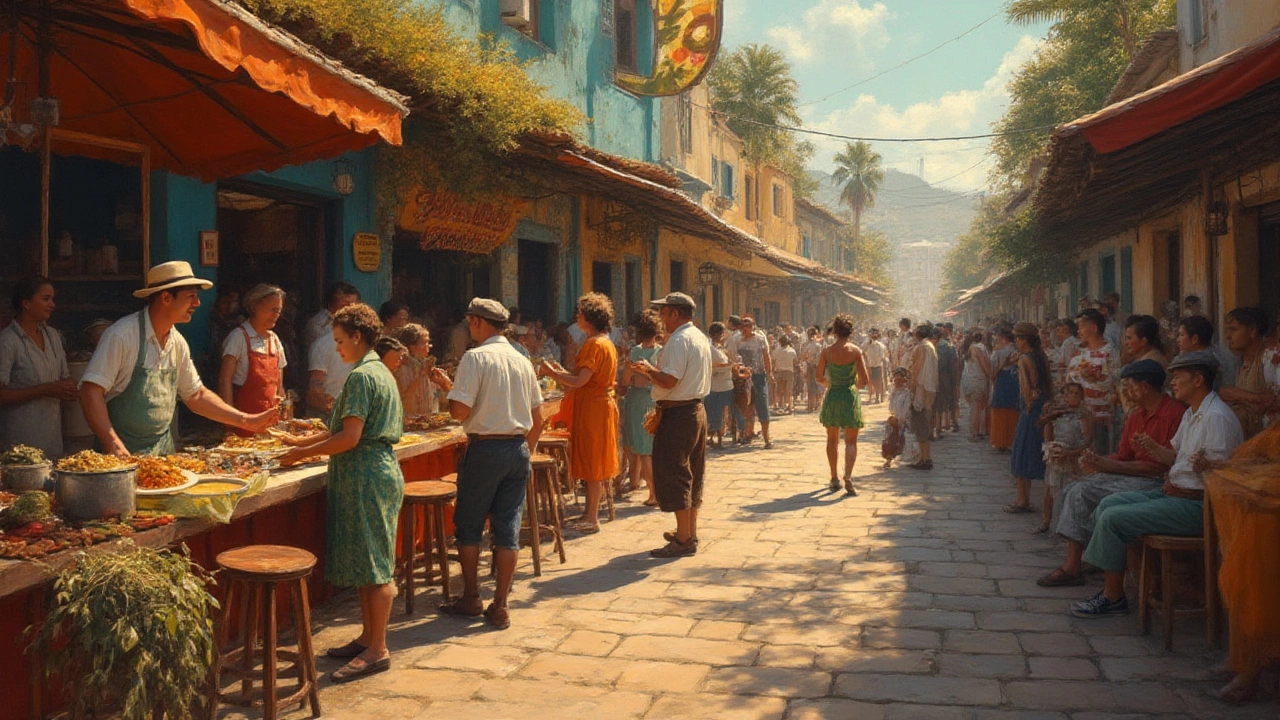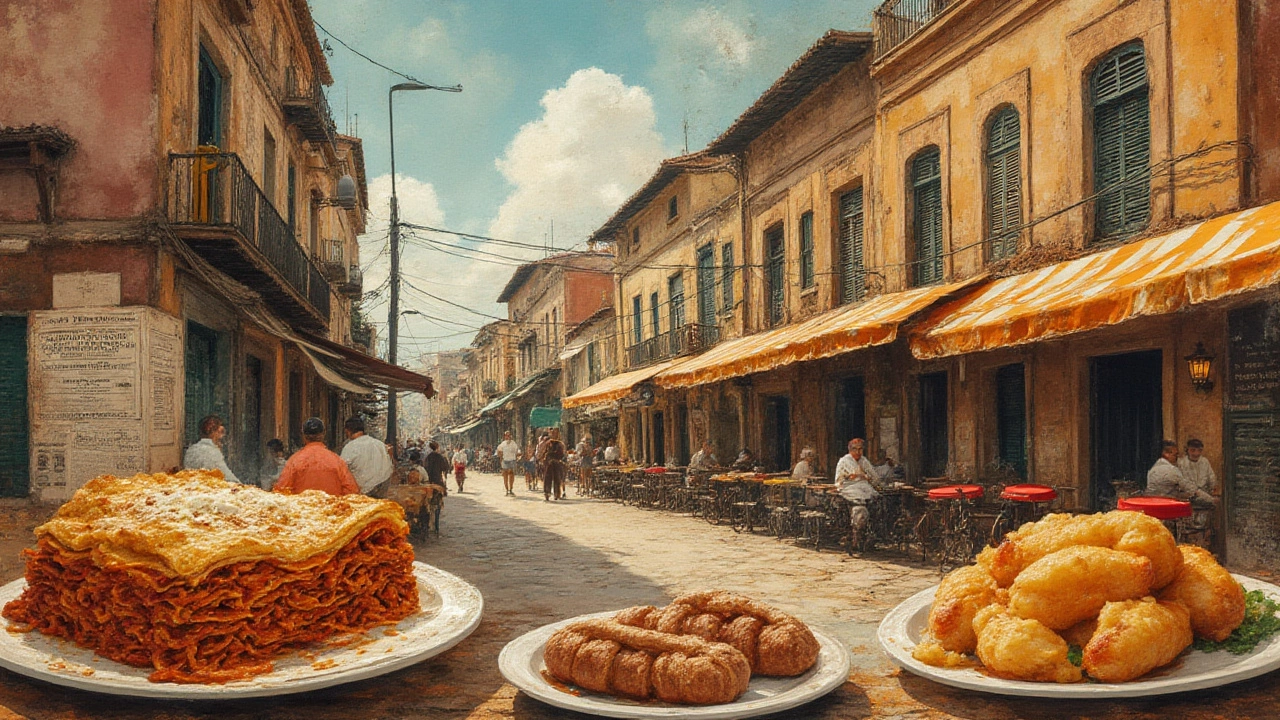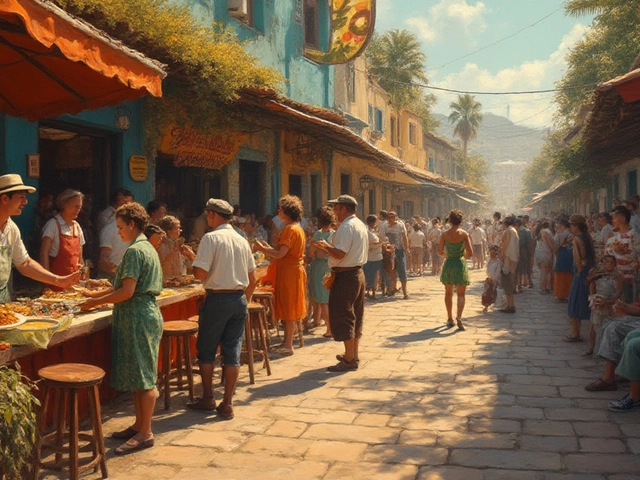
If you find yourself twirling spaghetti at a family dinner in São Paulo or biting into a gooey lasagna in a small café in Porto Alegre, you’re tasting more than a meal—you’re tasting history. Italian immigration changed the soul of Brazilian kitchens. When waves of Italians arrived between the late 19th and early 20th centuries, food wasn’t just their comfort from home. It was a lifeline, a bridge to new roots, and a gift they shared with neighbors. In fact, over 25 million Brazilians have at least one Italian ancestor, and you can practically chart that legacy by mapping beloved foods across the country.
Pasta: Brazil’s Love Affair with Noodles
Let’s get one thing straight: pasta didn’t just stroll into Brazil—it marched in, led by northern Italians from places like Veneto and Lombardy. Back in the late 1800s, these immigrants brought flour, eggs, and a nearly religious passion for fresh noodles. But Brazil wasn’t exactly stocked with durum wheat, so clever home cooks played around, often making pasta from basic wheat or even local cassava flour at times.
By the 1930s, factories like Santa Amália and Renata cropped up, and pasta wasn’t just for special Sundays—it became an everyday staple. São Paulo alone is home to hundreds of family-owned cantinas, some that have made the same ravioli recipe for over a century. One fun tip: Italian-influenced Brazilian pasta dishes often veer on the creamy side, thanks to local dairy and butter. And the ever-popular macarrão à bolonhesa (Brazilian Bolognese) is a far cry from what you’d get in Bologna. It’s saucier, chunkier, and sometimes gets a sprinkle of parmesan right from the cheese wheel—a sight to see if you’re near Mooca or Brás districts in São Paulo.
Want to try homemade? Brazilians adopted the Italian Sunday family lunch ritual. Roll fresh tagliatelle, layer a rich lasagna with plenty of mozzarella, or stuff big shells (conchiglioni) with ricotta and spinach for a true Italian-Brazilian table. Fun fact: surveys in 2024 put pasta as the country’s second-favorite dish, just behind rice and beans. A real sign Italians didn’t just bring spaghetti—they helped define comfort food in Brazil.
Pizza: A Slice of São Paulo
Picturing a Brazilian pizza joint? You’re likely seeing Italian roots with a twist. The earliest pizzarias popped up in Bixiga, São Paulo, not Naples. Italians adapted pizza to local ovens and tastes—mozzarella was swapped for whatever was available, sausage meant calabresa (cured local sausage), and the pies sprouted inventive toppings, like canned hearts of palm or even chocolate for dessert. The result? Today, São Paulo churns out more pizzas per night than New York. No exaggeration—an estimated one million pizzas are baked every day in the city.
There’s an unofficial rule: try it, then top it. The traditional pizza margherita still wins devotion, but Brazil’s all about exuberance. Four-cheese (quatro queijos), Portuguese (with egg, onion, and ham), and frango com catupiry (chicken and creamy cheese) are just as iconic. Ever noticed how pizzas come sliced at the table, sometimes with servers deftly popping slices off with giant scissors? That’s local flair in action.
If you host a pizza night at home, try the super-thin, crispy crust à la Paulistana, and don’t skip the bottles of olive oil and spice blends that Brazilians drizzle liberally. Tip: the wood-fired oven is sacred, but you can recreate that charred flavor by preheating a baking stone in a blazing-hot oven.

Savory Classics: Polenta, Risotto, and Beyond
The Italian contribution to Brazilian cuisine didn’t stop at pizza and pasta. Polenta, originally a peasant staple from northern Italy, became a favorite in the coffee-growing regions of Brazil, where Italians worked. If you drive through the south, you’ll spot steaming platters of polenta served with tomato ragu or pan-fried with parmesan. It’s popular enough that entire festivals are held in cities like Bento Gonçalves, celebrating the golden dish with music and polenta towers.
Risotto took root too, especially among Italian families from Veneto and Lombardy. Brazilian risotto—often paired with fresh local seafood or roasted vegetables—leans creamy, thanks to Carnaroli rice grown in Rio Grande do Sul, a region originally settled by Italians. One staple: risotto de camarão (shrimp risotto), which pops up on big occasions along the coast.
Other less-famous gems? Minestrone (with local beans), gnocchi (Batata, pumpkin, or yuca-based), and capeletti in broth—especially as a must-have soup for festive dinners. Trivia time: June 29 is Dia do Nhoque (Gnocchi Day), and it’s traditional to eat gnocchi for prosperity in the month. Restaurants get packed, and hands get floury as families roll out the soft dumplings in every region touched by Italian immigration.
Sweet Treats: Italian Desserts with a Brazilian Twist
Italy handed Brazil a sweet playbook, and Brazilian bakers ran wild with it. Cannoli, originally Sicilian, are stuffed in São Paulo’s Italian neighborhoods—sometimes still with ricotta and chocolate chips, but often with tropical fillings like guava paste or dulce de leche. Zeppole (fried doughnuts) come out piping hot on street festivals, dusted in cinnamon sugar for a distinctly local kick.
Tiramisu might surprise you. While it’s a recent addition compared to others, Brazilian pastry chefs fell hard for this creamy, coffee-soaked dessert. Many swap out espresso for robust local coffee, and mascarpone gets blended with sweeter cream cheese found in supermarkets. Tip: want a shortcut? Pick up ready-made ladyfingers at most Brazilian bakeries, and layer them with a mix of cream, condensed milk, and a splash of coffee for an easy home project.
Pannetone is another festival highlight. Christmas without pannetone—impossible! Over 90% of Brazilian households reportedly buy at least one panettone each December, turning this Milanese sweetbread into a national symbol of holidays. Supermarkets pile boxes sky-high, and newer flavors include Brigadeiro (chocolate), tropical fruits, or even doce de leite (that thick, sweet caramel spread).

Adapting Traditions: The Ongoing Legacy of Italian Food in Brazil
Dishes brought by Italian immigrants didn’t just survive—they thrived and changed. As Italians blended their own rituals with Brazil’s bounty, new flavors and dishes emerged that aren’t found anywhere else in the world. For instance, the Brazilian feijoada (black bean stew) might get a sprinkle of Italian sausage in some regions, turning it into a fusion dish. At Sunday gatherings, you might see chicken parmigiana served next to classic Brazilian fare, topped with extra cheese for good measure.
Italians were quick to embrace local ingredients; they grew chayote (called "chuchu") and pumpkin in backyard gardens, tossed local greens into minestrone, and swapped Parmigiano for a salty, fresh Minas cheese or mozzarella. Fun fact: Italians helped popularize the widespread coffee culture in Brazil, with many immigrants finding work on São Paulo’s blooming coffee plantations. As time rolled on, these recipes leapt from immigrant kitchens into national restaurants, shaping everything from lunch counters in Rio to high-end tasting menus in Curitiba. Just look at São Paulo’s food map and you’ll find that more than 50% of its most popular restaurants serve at least one Italian-Brazilian classic—whether pastas, pizzas, or desserts.
Here’s a quick look at the most celebrated Italian foods in Brazil today:
| Italian Dish | Brazilian Take / Name | Region Most Popular |
|---|---|---|
| Pasta | Macarronada | São Paulo, Southern Brazil |
| Pizza | Pizza Paulista | São Paulo, Rio de Janeiro |
| Polenta | Polenta Frita/Assada | Southern Brazil |
| Gnocchi | Nhoque | Brazil-wide, especially June 29 |
| Tiramisu | Tiramisu Brasileiro | São Paulo, Metro Region |
| Cannoli | Canoli Recheado | São Paulo (especially Mooca, Bixiga) |
| Pannetone | Panetone de Natal | Nationwide (holidays) |
Hungry for more? Visit any Italian neighborhood in Brazil, and you’ll get invited to try decades-old recipes—and maybe some new mashups no grandmother in Sicily could have dreamed up. That’s the magic of food: an evolving tradition, one delicious forkful at a time. The next time you dig into a heaping plate of Italian food Brazil style, remember, you’re part of a living story that keeps growing with every meal shared at the table.







Write a comment